Best Website Design Software for Beginners to Experts
Choosing the right website design software is essential for creating high-quality, visually appealing, user-friendly, and functional websites. In today's digital age, a well-designed website is crucial for organisations, businesses, or individuals to establish an online presence and communicate effectively with their target audience.
With so many options in the market today, choosing the most appropriate website design software can be challenging. This article provides a complete guide to website design software by analysing the leading options on the market, comparing features and capabilities, providing tips on correctly choosing specific needs/skill levels/interests and giving recommendations based on different user profiles.
The importance of choosing good web design software should not be underestimated. A well-designed site can attract visitors, engage them (keeping them longer) and showcase products/services effectively (inducing purchases). At the same time, a poor one might lead to high bounce rates (users leaving quickly), loss of potential clients/customers or even tarnish one's brand image. Therefore, It is essential to look carefully at features/functionality/ease of use when selecting between different web design packages/products to avoid wasting time creating something that does not meet your objectives.
Table of Contents
Popular Website Design Software Options
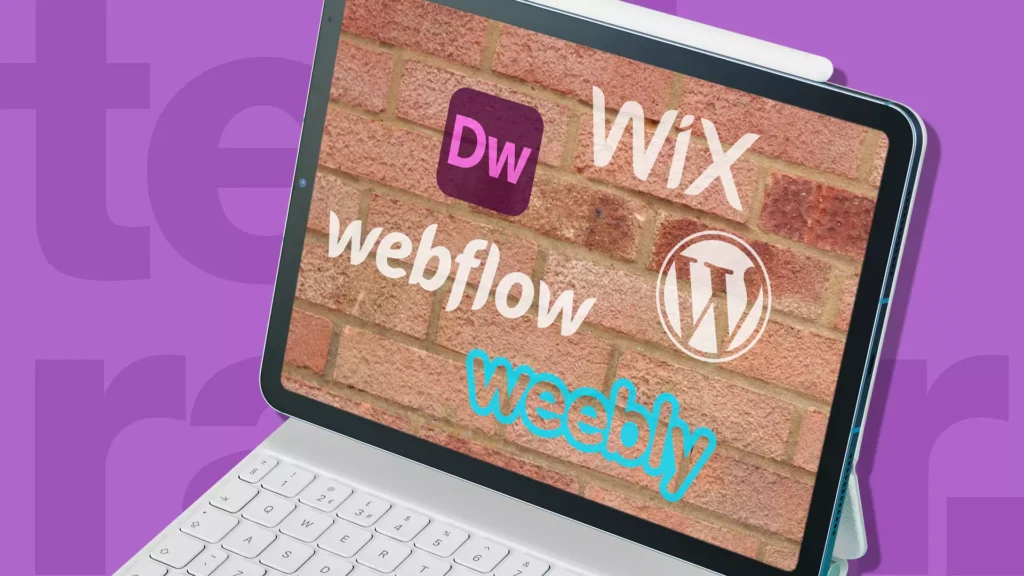
When it comes to website design software, there are several popular options available in the market. These options cater to different user needs, skill levels, and budgets. Let's take a closer look at some of the most popular website design software options:
Wix: Wix is recommended for those with no experience with website building and professionals. The user-friendly site builder makes creating a website easy and efficient, thanks to its drag-and-drop interface, customisable templates and various features. Wix's intuitive design and ease of use have made it a popular choice for individuals and small businesses that want to create a professional-looking website without using any code.
Adobe Dreamweaver: This powerful web design software is aimed at more experienced designers and developers who require greater control over their web design process – including coding. With Dreamweaver, users can build complex websites that are highly interactive by combining HTML, CSS, JavaScript and other coding languages.
WordPress: This versatile content management system (CMS) powers about 43% of all the websites on the internet. An array of themes, templates and plugins allow users to create almost any site they like with WordPress. WordPress is flexible regarding what kind of sites you can build with it. Because it's so widely used, there are thousands upon thousands of resources – from tutorials to online forums – dedicated to helping people get the most out of it.
Figma: A cloud-based design tool focused on collaboration and UI/UX design that allows multiple designers or teams to work together in real-time, proving incredibly useful when everyone is working remotely. Figma offers numerous features for interactive scenarios, prototyping or wireframing, which makes it particularly popular with UX/UI designers.
Weebly: Weebly aims to simplify life for non-coders who want an easy-to-use web design software package. Its intuitive platform means anyone can create professional-looking websites via simple drag-and-drop functionality using one of its customisable templates. It is ideal if you're launching your first business landing page or starting a basic site such as a blog.
For example, If you were a small business owner looking to set up an easy yet professional-looking website without any coding experience, the customisable templates, drag-and-drop functionality and user-friendly interface offered by Wix would make it a good choice. You could easily customise the template to reflect your brand style and requirements – all without writing any code. In contrast, if you were an experienced web designer who liked coding and wanted more control over how the site looks and works, you might choose Adobe Dreamweaver instead because it enables you to build custom designs and implement advanced features via writing code.
Features and Capabilities of Website Design Software
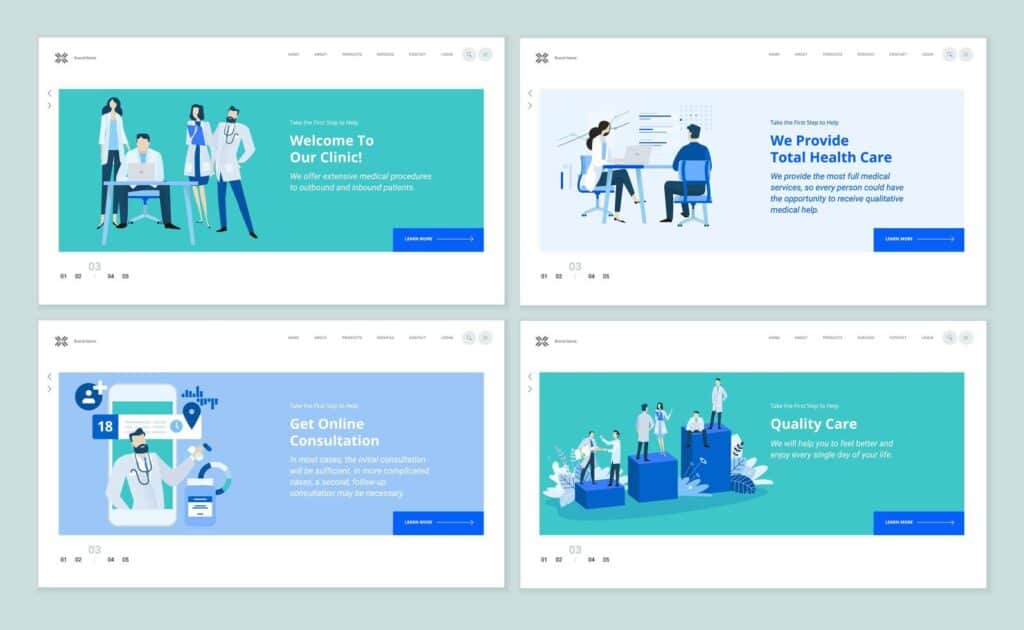
Website design software includes Various features and capabilities to enhance website design and functionality. Here are some key features commonly found in website design software:
- Visual Editors: Drag-and-drop functionality allows users to create and customise web pages intuitively. They do not need coding knowledge to use these editors, making the process accessible for all skill levels. Visual editors permit adding and arranging elements on a web page, customising colours, fonts, images, etc., with real-time previews.
- Compatibility with Existing Systems: Integrating website design software with other tools and platforms should be possible. Integration makes it easy to connect the site with other systems like e-commerce platforms, customer relationship management (CRM) software or marketing automation tools – streamlining workflow for visitors and administrators.
- Templates: Pre-designed layouts that provide a starting point for creating websites; offer different designs/styles which can be customised to match brand/needs. Save time/effort by giving structure/design foundation so users only have to focus on content fine-tuning/customisation.
- Fonts/Graphics: A wide range of fonts/graphics is vital for visual customisation. Software often includes a library of fonts/graphics that can be used to improve the visual appeal of a site; the right font choices/graphic enhancements help convey brand identity/message consistently.
- Responsive Design: Mobile devices now account for most of the online browsing traffic – so responsive design is a crucial feature of modern web design software. Responsive designs automatically adapt sites created using them based on the user's screen size/device being used- ensuring consistency across smartphone/tablet/desktop experiences.
The visual editor feature found in website design software is a good example. This allows users to create web pages by dragging and dropping elements onto the canvas, eliminating the need for coding knowledge and making web design more accessible to people with different skill levels. Templates offer a starting point when designing websites that can be customised to suit the brand's unique style and needs. There are many fonts and graphics to choose from, helping to make a website visually appealing and creating a cohesive brand identity.
Responsive design capabilities are also crucial in today's mobile-first world as they ensure that websites look good and work correctly on different devices such as smartphones or tablets.
Comparison of Different Website Design Software
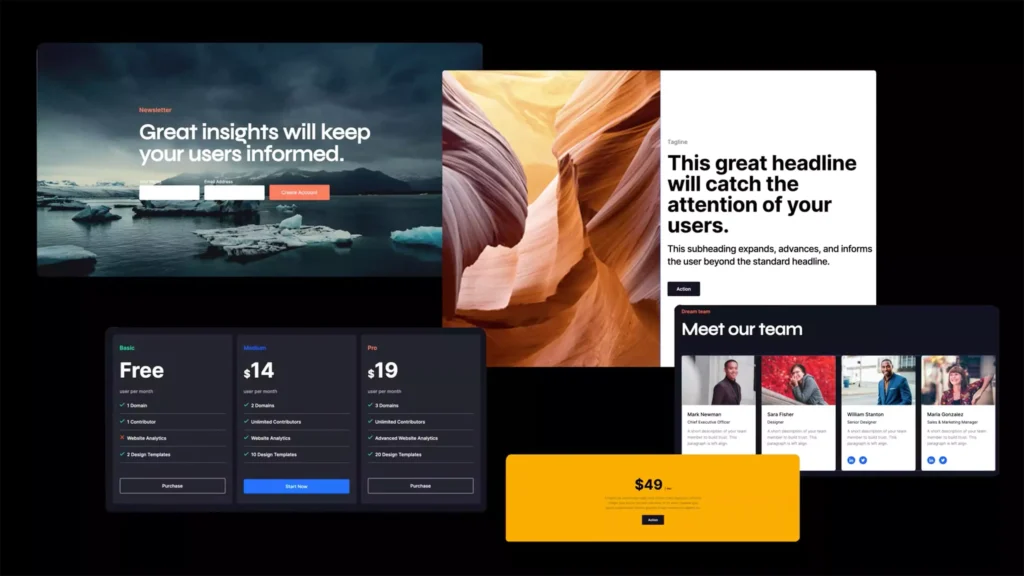
When choosing website design software, it's essential to compare the numerous options available based on various factors. Here are some critical factors for comparison exploration:
User-Friendliness: Ease of use is vital, especially if you're a beginner or have limited technical skills. Some website design software is more intuitive and has a shorter learning curve than others. Assessing ease of use will help you find software that fits your proficiency level.
Interface: How the interface looks and is laid out can significantly impact usability. Some software may have a complex interface with a steep learning curve, while others may be clean and easy to grasp, making for a more efficient design process. Comparing interfaces will help you choose what matches your preferences and workflow.
Value For Money: It's crucial to consider the features relative to the price tag to determine the value for money when selecting website design software. Some offer an extensive feature set but at a higher price than those offering fewer features at a lower cost. Evaluating value for money helps ensure you make an economic decision that covers your specific needs and budget.
Support/Resources: The availability of customer support/learning resources can be vital – mainly if it would be helpful to have assistance during the website-design process sometimes/during the process from time to time. Documentation/tutorials/community forums are found extensively among some offerings but not across all as standard; comparing them allows users to get help and guidance whenever required quickly.
Customisation Options: Flexibility in designing/customising elements can be necessary when creating unique, visually appealing websites (also/published online). Various customisation options feature highly within specific website-design offerings that allow users to fine-tune every aspect of their designs, which could make it easier here; comparing customisation options makes sure they meet users' requirements. This means users can choose software that provides the flexibility they need. Now, we will compare two popular website design software options to illustrate the point: Wix and WordPress.
Wix is known for its user-friendly interface and drag-and-drop functionality, which make it simple/easy for beginners to create websites without any coding knowledge – it offers a range of customisable templates from which to choose, allowing users to fine-tune elements of their designs so they match their brand.
WordPress, on the other hand, provides a more flexible platform with more outstanding customisation options. There are many themes/they offer numerous plugins. While Wix may be easier/simplest (to use), WordPress allows more control over designs/makes it possible for you to have more freedom with your design choices; as such, it would be better suited to those with more advanced design skills/fits those with some designing experience better.
Tips for Choosing the Right Website Design Software
Selecting the correct website design software can present a tricky challenge with many possibilities. Here are some pointers to help make an informed choice:
Consider skill level: Opt for software that matches your expertise level. Beginners should look at user-friendly website builders such as Wix or Weebly, while more experienced designers may prefer tools enabling coding and advanced design features, like Adobe Dreamweaver.
Identify specific needs: Identify required features and functionalities to create a shortlist of suitable website design software options. Consider what kind of site you're building, your target audience, and what goals you'd like to achieve from the get-go – e-commerce sites might need shopping carts and payment gateways, for example.
Factor in budget considerations: Affordability matters. Check pricing plans and subscription options provided by different software vendors to identify solutions within your price range; also factor in additional costs (e.g., hosting fees or premium templates).
Trial and test: Free trials or demos allow usability testing before committing long-term – this means experiencing features hands-on, assessing interface suitability, compatibility with specific requirements, etc.
User reviews matter: Insights into the pros/cons of using particular website design software come from researching feedback/experiences from other users. Read reviews/testimonials/case studies to gauge real-world performance/user satisfaction levels around specific product offerings.
For instance… If someone is a beginner (with no coding experience) on a tight budget, their priorities could be user-friendly software backed up by affordable pricing options – think Wix or Weebly, which both provide intuitive drag-and-drop editors plus pre-designed templates/customisable content already sorted. They also supply helpful guides to assist those newbies needing assistance in getting their site off the ground fast. On the flip side… Someone with coding know-how plus definite design requirements might use Adobe Dreamweaver or WordPress.org.Adobe's offering, for instance, allows more advanced customisation plus greater overall flexibility.
Website Design Software for Beginners
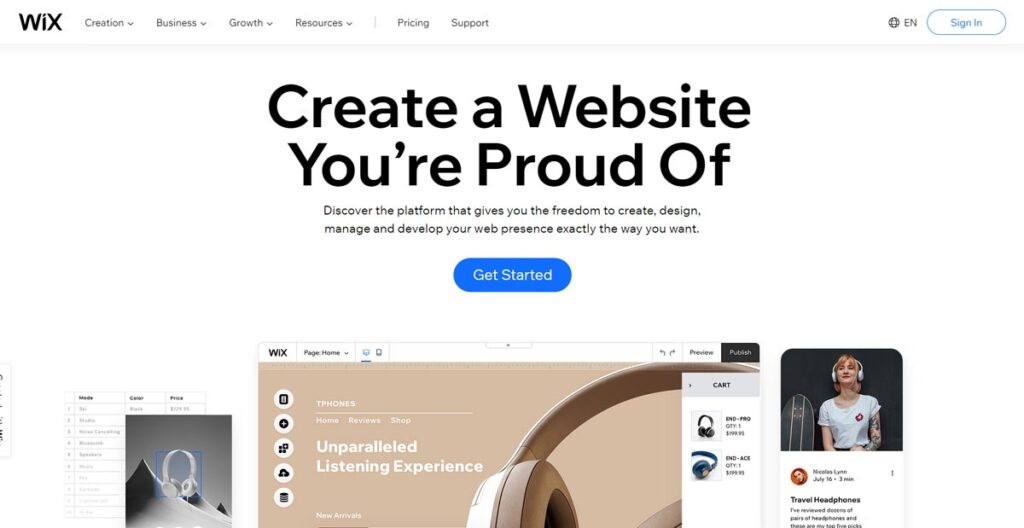
For those just starting in website design, there are specific software options that are exceptionally user-friendly and intuitive. Let's take a look at some of the recommended website design software for beginners:
Wix: Wix is a popular choice for beginners as it offers a user-friendly interface and uses drag-and-drop to help you design your site–no coding knowledge is required. The platform features hundreds of customisable templates and components which allow beginners to create professional-looking websites with minimal effort. Wix also has helpful resources such as guides, tutorials, and customer support to assist users.
Weebly: Weebly is an additional option which makes life easier for beginners with their easy-to-use functionality. They offer guide-by-the-hand step-by-step instructions combined with a large variety of components, allowing any beginner to create professional-looking websites quickly. Weebly provides another simple web-building experience, supported by its extensive range of themes and flexible design component customisation options.
WordPress: WordPress may have more advanced customisation alternatives, but even so, they provide beginner-friendly templates and intuitive features.
Users can choose from an enormous array of themes available and then use the built-in WordPress Customizer (which allows easy changes between different designs/layouts) – customising their selection as per need.
The company provides extensive documentation and supportive communities, so rookies soon learn to work WordPress effectively.
When new to building websites, it is essential to keep things simple – selecting software offering a low learning curve plus excellent user interfaces.
With Wix or Weebly, anyone can build highly professional sites without coding know-how – thanks to both platforms' drag-and-drop editors and pre-designed templates. Also, because both supply numerous levels/ways of customisation, one can access too many creative elements, etc.
WordPress, on the other hand, is much more versatile – regardless, it still caters heavily towards novices by offering beginner-friendly themes plus plenty of opportunities for customisation, allowing anyone to build their unique site.
Web Design Software for UI/UX Design and Prototyping
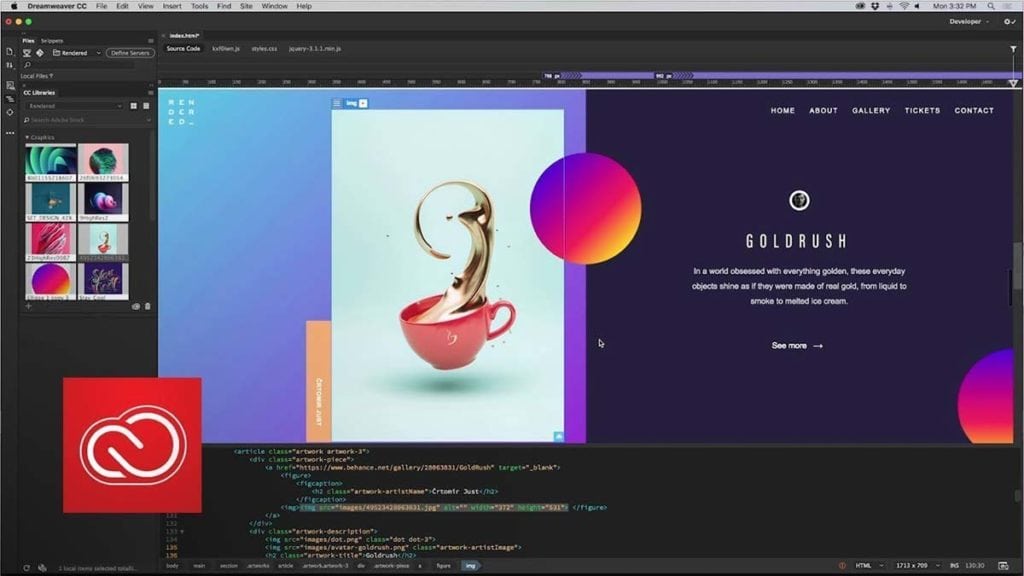
Regarding UI/UX design and prototyping, specific website design software options are tailored to these needs. Let's examine some of the best software options for UI/UX design and prototyping:
Adobe Dreamweaver: Adobe Dreamweaver is a tool with coding and advanced design features. It offers a variety of tools and capabilities that are advantageous to UI/UX designers, including custom designs and interactive elements. Dreamweaver's coding capabilities make it an attractive choice for designers who want more control or freedom in their workflow.
Figma: Figma is a widely used option for collaborative UI/UX design and prototyping. Its real-time collaboration features make it ideal for teams working remotely. Multiple designers can work on the same project simultaneously thanks to Figma, which makes collaboration seamless and efficient. It also has prototype tools that enable you to create interactive designs that stakeholders can use.
Visual Studio Code: Visual Studio Code is primarily a text editor for coding. However, due to its extensions and plugins, it can also be utilised for web design projects like UI/UX design. Visual Studio Code provides plenty of flexibility to incorporate code into your UX/UI process.
For example, if you need advanced designing features and extended coding capacities, going with Adobe Dreamweaver would be an intelligent decision where one can develop customised designs, implement interactive elements, and precise user experience fine-tuning through the coding part.
On the other hand, if you are looking forward towards collaborating on UX/UI designing and prototyping, which is a based approach, then considering Figma would help. The real-time collaboration feature will let multiple designers work simultaneously while creating prototypes and gathering stakeholder feedback.
Visual Studio code is the primary text editor; however, due to its extension and plugin support, one could use this setup, too, in case one prefers coding alongside the UX/UI designing part.
Free Web Design Software Tools

Businesses and individuals can save money by using free web design software tools. Many products on the market allow users to create attractive, user-friendly websites at no cost:
1. CMS Hub: This free visual editor and content management system makes building and managing a website easy, even for non-techies. The drag-and-drop interface allows users to customise their site with no coding.
2. WordPress: One of the most popular content management systems, offers a free version with numerous features and customisation options. Users can select from a library of thousands of free themes, modify them to fit their brand exactly and add functionality via an extensive range of free plugins.
3. Figma: The graphic design tool we previously mentioned as a top UI/UX design software option also has a free version with collaboration features baked in. The free version lets you create designs, share them with team members in real time so they can collaborate on them, and get feedback from people who don't have Figma accounts.
4. Sketch: Sketch is one of the best-known digital design apps for creating user interfaces (UI). It's not 100% freeware – but it does offer a free trial, which enables you to try before you buy! Its feature set makes Sketch an obvious choice for anyone involved in UX/UI or web design projects.
5. GIMP: This open-source image editing software is packed with powerful tools for tweaking your pictures or creating new ones from scratch – just like its premium paid-for rivals Photoshop CC etc – making it ideal for sprucing up your website photos on a budget.
The sheer array of GIMP tools (paint brushes, masks etc.), plus its customisability via third-party plugins, make this image editor worth checking out if Photoshop's price tag is too high.
Using these products could be especially attractive if you're working on a limited budget but still need to create a website. CMS Hub and WordPress offer free versions with the basic features required to build a site. Meanwhile, Figma, Sketch and GIMP are designed software tools with free versions allowing you to prototype, create or tweak images for your web project.
Impact of Using Web Design Software

The use of web design software can have several impacts on the overall website experience. Let's take a closer look at some of the critical effects that using web design software can have:
Making a good first impression: A website that has been well designed with the help of design software will make an immediate positive impression on visitors. A website's visual appeal and user-friendly interface can capture visitors' attention, encouraging them to stay longer and explore further. It follows that if you want your site to engage visitors and increase conversions, it makes sense for it to be aesthetically pleasing, easy to navigate, and for users to find what they are looking for quickly.
Improving SEO (search engine optimisation): Optimised sites achieve higher rankings by making websites more search-engine friendly, meaning more organic traffic comes their way. Design software often includes features that facilitate SEO from the start, such as customisable meta tags, clean code, and responsive design – where page content resizes automatically depending on screen size or device.
Building trust: Professionally designed websites inspire credibility in customers. A well-designed website reflects positively on your brand; showing professionalism and reliability inspires greater confidence among customers than would otherwise be possible. If your brand's website is visually appealing, easy to navigate, and loads super-fast across all devices (especially mobiles), people will likely stick around longer – helping increase conversions.
Consistency of branding: Web design software helps keep brand image cohesive throughout a site – important when seeking recognition in highly competitive markets where adhering rigidly to brand guidelines is crucial. You can customise colours used in callouts or hyperlinks alongside fonts/typography style used, plus imagery, too, if necessary, so everything feels coordinated – reinforcing the message while creating a unified experience for those revisiting the site later.
For example:
An aesthetically appealing website that captures visitors' attention and encourages them to spend longer on-site could increase conversions and improve ROI return on investment. Furthermore, following SEO best practices – such as ensuring optimised page titles, meta descriptions and responsive web design – could boost search engine rankings and increase organic traffic.
A professionally designed website can help build trust with customers; a site that is visually appealing, easy to navigate and offers seamless user experience will reflect positively on your brand's credibility and reliability – versus one that looks dated or was poorly designed where questions might be asked about whether it's genuine or not? Lastly, consistent branding across all pages achieved via design software tools (e.g., using the same colours/fonts/imagery) results in a cohesive brand identity, which helps reinforce the message while creating a unified experience for those revisiting the site later.
Recommended Web Design Software for Non-Coders
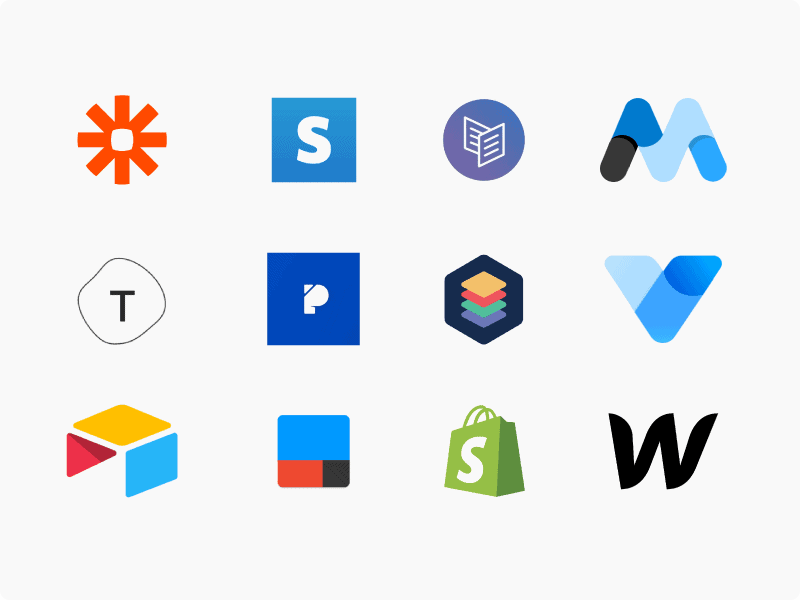
If you don't have the coding know-how or technical skills, that doesn't mean you can't create a professional-looking website. Here are some options for web design software that we recommend for non-coders:
1. Wix: This platform offers customisable templates and an intuitive drag-and-drop editor. It has various features and design options, so you can create a stunning website without knowing how to code.
2. Weebly: Another user-friendly option is Weebly, which simplifies the process for non-technical users through its intuitive platform, drag-and-drop functionality and customisable templates.
3. WordPress.org: While WordPress.org gives you more control over how your website looks and feels, it can still be used by non-coders – especially with the help of user-friendly themes and plugins.
WordPress.org has an extensive themes library that can be easily customised via the built-in WordPress Customizer. Plugins also allow adding advanced functionality to your site without writing any code.
Website design software allows people who aren't proficient coders or possess little coding knowledge to build professional-looking websites.
Wix, Weebly, and WordPress.org are recommended software solutions because they have user-friendly interfaces, customisable templates, and other design tools.
These platforms remove the requirement for coding knowledge while giving newbies all they need to set up their sites – once again putting power in their hands!
Conclusion
Choosing the right software to design your website is crucial if you want it to be successful and meet all your needs. The options are endless, but things like how skilled you are, what features you need, and whether you're on a budget will impact your best tool. Designing websites is essential as it helps them look good, rank well in search engine results pages (SERPs), give people trust in the brand, and ultimately stand out from the competition. Wix, Weebly or WordPress could suit someone who wants an easy-to-use tool without much coding.
So there we have it: our comprehensive introduction to web design software for beginners. We think these tools are the best for anyone just starting with web development – they offer plenty of functionality at accessible price points, so even those working to tight budgets can get excellent hands-on experience.
In conclusion, website design software plays a significant role in building high-quality websites that look great and work well – even if users don't know how to code or where they should start when creating their site. By understanding what different types of web builders offer (there are only three) and how they compare (quality vs cost vs time), prospective web developers can make sure they pick one that aligns with their skill level and goals.
Whether starting from scratch or looking for advanced customisation options, building a personal portfolio or online store, or hoping to show off your ideas or create a client base, a website builder option is perfect.
Remember: when picking out the best website builder that suits your specific needs, consider ease of use, interface value-for-money aspects such as support/resources available, and customisation options.”
With this advice today, plus some practice behind-the-scenes using DIY site creators explained above – anyone should be able to get online with an attractive, professional-looking end product, regardless of how far along they are in their web design journey.
